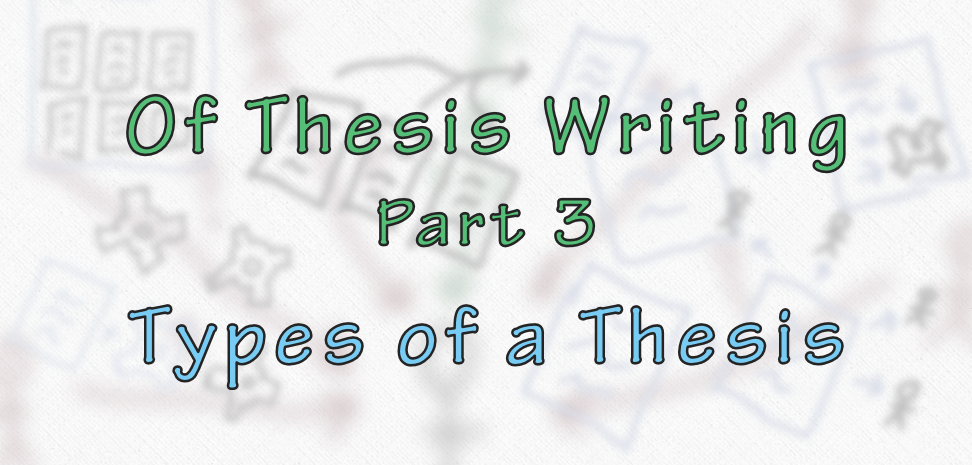Because different students have different temperaments and interests, there are also different types of exploration and discovery one might take. They all have their own set of tools and guidelines to achieve successfully. Overall one thesis is probably an amalgamation of different types. As with any journey there can be different obstacles to overcome. Those obstacles might fall under any of the types, thus the type-specific tools can help you tackle them.
Theoretical Study
Theses under these types focus on the different systems of ideas developed in a chosen field. The goal of any theory is to explain a phenomenon and provide some predictability to it. If you focus on a goal in a theoretical study, you should become well aware of the research done regarding the surroundings of your goal.
Independent Study
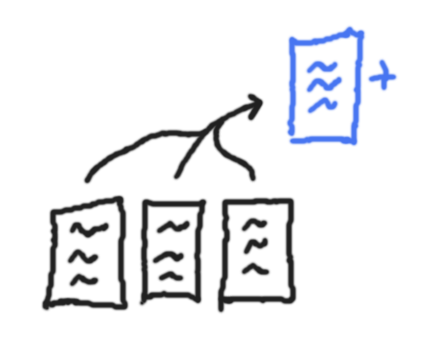 Primary focus is to advance or improve a field in the theoretical side of things. Meaning that you can use scientific tools to derive new conclusions or results of the underlying known. In this type it is very important that your defined problem and the found solution is well defined and accurately presented. Basically you read and understand the theory of a particular field and then discover and add your own contribution to that field.
Primary focus is to advance or improve a field in the theoretical side of things. Meaning that you can use scientific tools to derive new conclusions or results of the underlying known. In this type it is very important that your defined problem and the found solution is well defined and accurately presented. Basically you read and understand the theory of a particular field and then discover and add your own contribution to that field.
Review-type Study
 Here there are actually two types of approaches you may vary between. The purely review type constitutes to taking a smaller number (may be even one) published articles and checking their validity. The number of reviewed sources here depends on the content of the sources. To check their validity means to try to follow the path described in the article and see if you too end in a similar place as did the authors. If not, then you can try to discover and point out the errors of the sources in review.
Here there are actually two types of approaches you may vary between. The purely review type constitutes to taking a smaller number (may be even one) published articles and checking their validity. The number of reviewed sources here depends on the content of the sources. To check their validity means to try to follow the path described in the article and see if you too end in a similar place as did the authors. If not, then you can try to discover and point out the errors of the sources in review.
 The second approach is rather a survey study. In this case you try to find a larger number of articles with some commonality. It could be that they try to map out a similar path or maybe use the same set of tools to overcome different problems. Here the aim is to provide a thorough overview of similar work done in some field and to create a better systematic approach to navigate that area.
The second approach is rather a survey study. In this case you try to find a larger number of articles with some commonality. It could be that they try to map out a similar path or maybe use the same set of tools to overcome different problems. Here the aim is to provide a thorough overview of similar work done in some field and to create a better systematic approach to navigate that area.
Applied Research
Compared to the theoretical study types, the types here focus more on an actual, usable, practical result of a thesis. Your journey should lead to you a place from where you find a treasure that everyone else will barter for with you as soon as you get back with it. Meaning that during your journey you create something practical, which you put to use for others’ benefit.
Author’s Software Solution
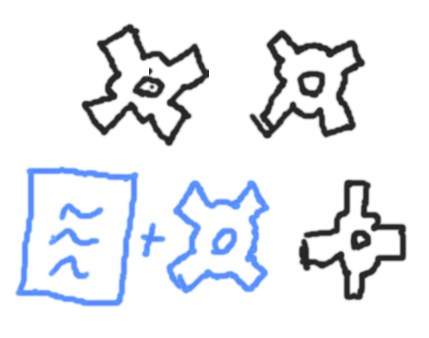 In this type you can create your own software to compete with other similar software. Preferable way to achieve this is to find a niche and occupy that. Find out what other similar software has been built and create something useful that the other software do not deliver. In an ideal case you should be able to sell your software on the market afterwards. You also need to have defined metrics, which you use to measure the quality of your software. Those can be performance, usability, engagement or anything else that is important in your software. As your thesis is a map, you need to also describe how you created the software.
In this type you can create your own software to compete with other similar software. Preferable way to achieve this is to find a niche and occupy that. Find out what other similar software has been built and create something useful that the other software do not deliver. In an ideal case you should be able to sell your software on the market afterwards. You also need to have defined metrics, which you use to measure the quality of your software. Those can be performance, usability, engagement or anything else that is important in your software. As your thesis is a map, you need to also describe how you created the software.
Hardware or Software Experiments
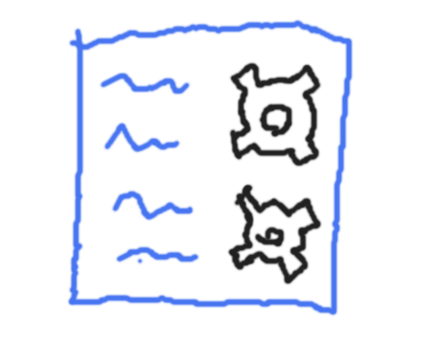 Here you can take some new technology and test it in terms of some measurements or goals you define. As before those can be the ones that seem prudent for the chosen technology (either hardware or software). You can even take that one step further and test the combination of some hardware and software. However the measurements needs to be comparable to the measurements of other technologies. This also includes measuring the achievement of the goal. The choices of technology and measurements need to be justified and alternatives provided. In that sense it is like describing a number of different roads from A to B and finding out, which one is more effective for which situation.
Here you can take some new technology and test it in terms of some measurements or goals you define. As before those can be the ones that seem prudent for the chosen technology (either hardware or software). You can even take that one step further and test the combination of some hardware and software. However the measurements needs to be comparable to the measurements of other technologies. This also includes measuring the achievement of the goal. The choices of technology and measurements need to be justified and alternatives provided. In that sense it is like describing a number of different roads from A to B and finding out, which one is more effective for which situation.
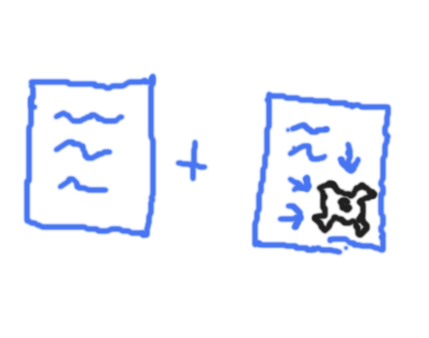 An alternative in this type is to create a user manual for a new chosen technology. In that case you put more focus on a newly created one road and provide a user-friendly map to navigate it.
An alternative in this type is to create a user manual for a new chosen technology. In that case you put more focus on a newly created one road and provide a user-friendly map to navigate it.
Creation of Learning Materials
 This is similar to the survey type study and the creation of a user manual. In the sense that you map out an already existing area, but create a new way for people to understand it. The unknown for you here is finding and using the tools suitable for illuminating the chosen topics to specific new groups of people.
This is similar to the survey type study and the creation of a user manual. In the sense that you map out an already existing area, but create a new way for people to understand it. The unknown for you here is finding and using the tools suitable for illuminating the chosen topics to specific new groups of people.
| Research | Review | Build | Experiment | Teach | ||
 |
 |
 |
 |
 |
 |
 |
| Independent Study | Article Review | Survey | Software | Tests and Combinations | User Manual | Learning Materials |
Now that you know the different thesis types and can hopefully formulate your own thesis goals, it is time to pay attention to some key aspects of a thesis in the next Contents of a Thesis chapter.

